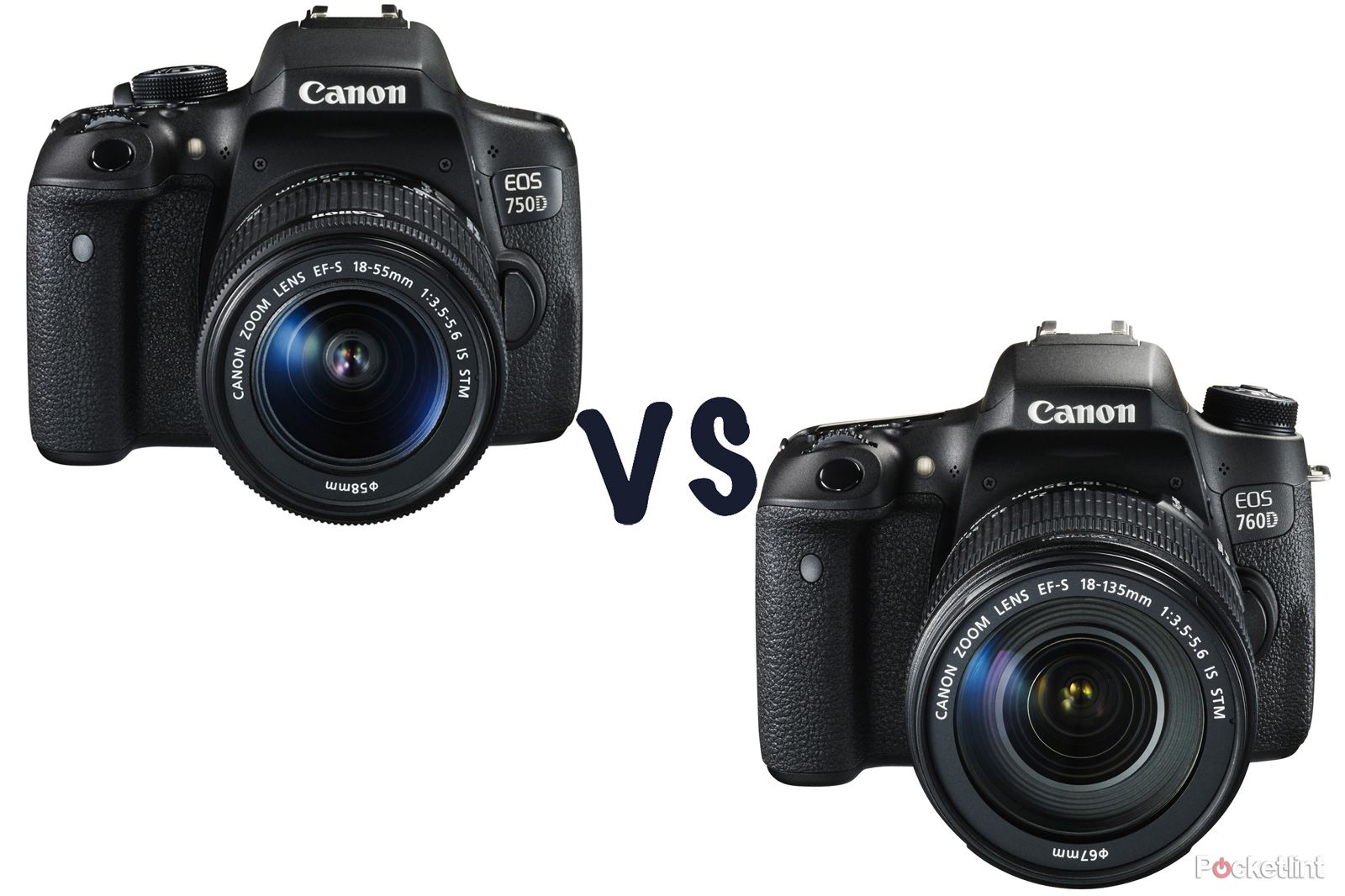Canon has unveiled not one, but two new mid-range DSLR cameras to its lineup, making for a busier EOS range than ever before. The new EOS 750D and 760D are like the filling in a Canon sandwich, sat above the existing EOS 700D, but below the 70D in terms of rank.
The difference between the two new models is entirely cosmetic, with the 760D featuring a more advanced layout and LCD top plate for the sake of an extra £50. So which to buy - 750D or 760D? We break down their differences in more detail to make it less confusing.
Design
Of the pair the 760D is the most advanced, with an LCD top plate built-in so you can quick-glance and adjust current settings when pulling the camera away from your eye. This also lights-up with the press of an illumination button which is handy.
The 750D, on the other hand, lacks this top plate, and you'll notice its main mode dial sits to this right-hand side instead. Both models do feature an dedicated mode dial (including manual and point-and-shoot scene modes), they just sit on opposite sides of each camera. The only dial difference is he 760D has a press-to-lock button, which the 750D lacks.
To the rear the 760D has a rotational thumbwheel which can be used in combination with the top thumbwheel to control settings. By contrast the 750D has a distinct four-way d-pad, and just the one thumbwheel control, which simplifies access to settings control, but is the kind of thing more advanced photographers lament.
Screen & viewfinder
Both models feature the same vari-angle mounted touchscreen LCD, complete with 1,040k-dot resolution. Ideal for keeping faced into the camera for protection; turned around for digging through menus, preview and playback; or flipped out for waist-level, overhead or movie capture.
The viewfinder, too, is one and the same. It delivers a 95 per cent field-of-view, meaning the outer edge of what you capture can't be seen in the viewfinder. An overlay of the autofocus system makes it easy to use, whichever camera you pick.
Autofocus & burst speed
Pulled directly from the EOS 70D is Canon's 19-point all-cross-type autofocus system, which graces both 750D and 760D systems. It's quick to capture both still or moving subjects and a step beyond the 9-point system found in the earlier 700D.
But it's not just the number of points, it's the speed at which they work. And as all of them are cross-type they're equally sensitive in both portrait and landscape orientation.
If single shot isn't what you're after then both models can also capture shots at up to five frames per second (5fps).
Sensor
Tucked away inside both models is a new 24-megapixel APS-C sensor, capable of delivering shots from ISO 100 - 12,800 (expandable to ISO 25,600).
This sensor is all part of a new wave of higher-resolution Canon sensors. It's out with the old 22-megapixel cap and in with a higher-resolution standard, to take on Nikon's 24-megapixel models square on.
Price & release date
Overall we like the sentiment of having different options, but it's at the risk of overwhelming buyers. We see what Canon is trying to do: have a wide range of DSLR cameras on the shelves to show its dedication to the format, and use the public to assess uptake in popularity.
That makes the 750D seem somewhat unwarranted as the 700D continues in Canon's range. The 760D, too, is close to the now-dropped 70D price point that you may be tempted to skip both of the new models altogether and look back one generation.
But if you have found your perfect match in the middle then the Canon EOS 750D will be available from April, body-only priced £600, or £689 with an 18-55mm kit lens. Released at the very same time, the EOS 760D will be available body-only for £650.

